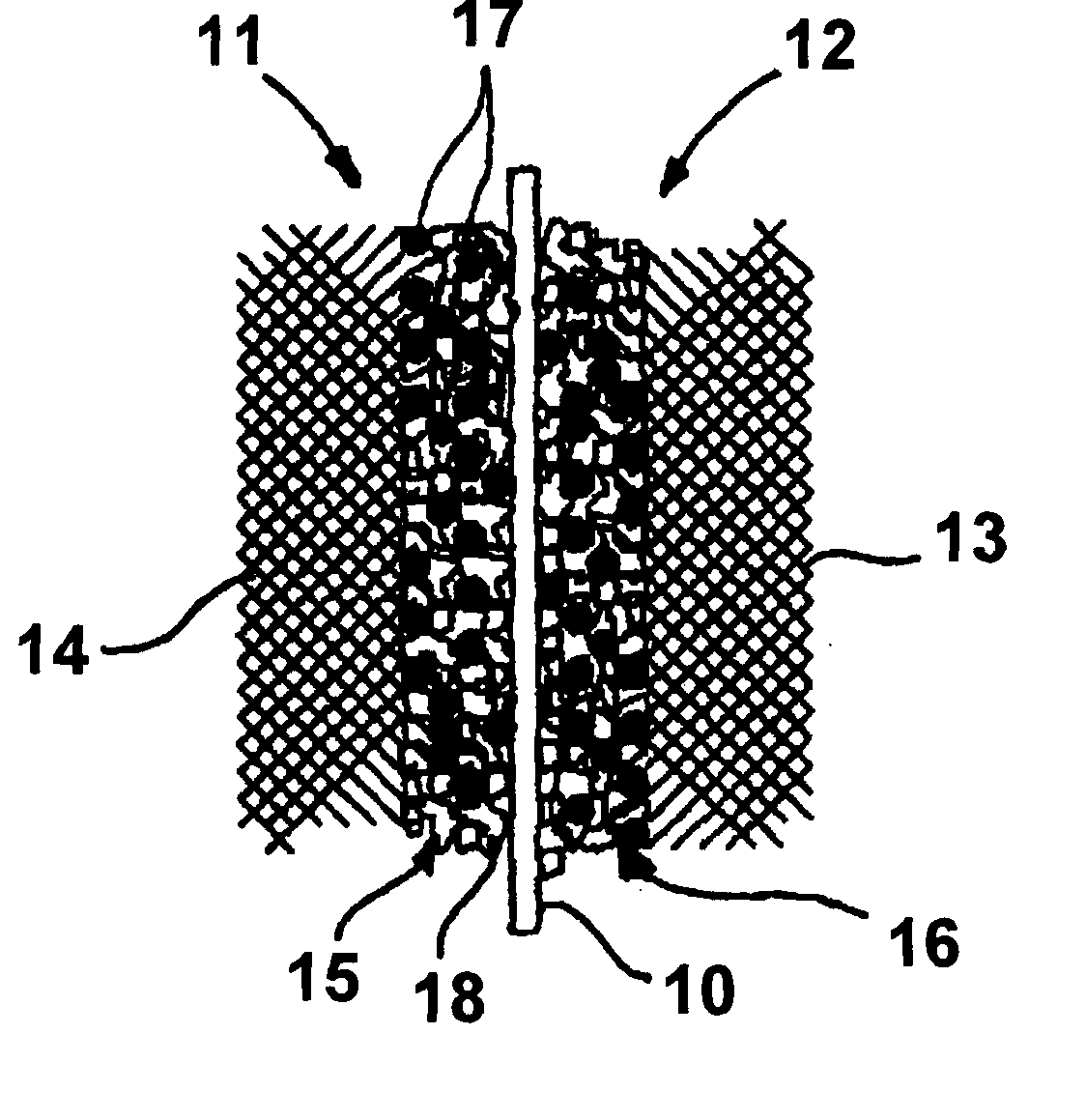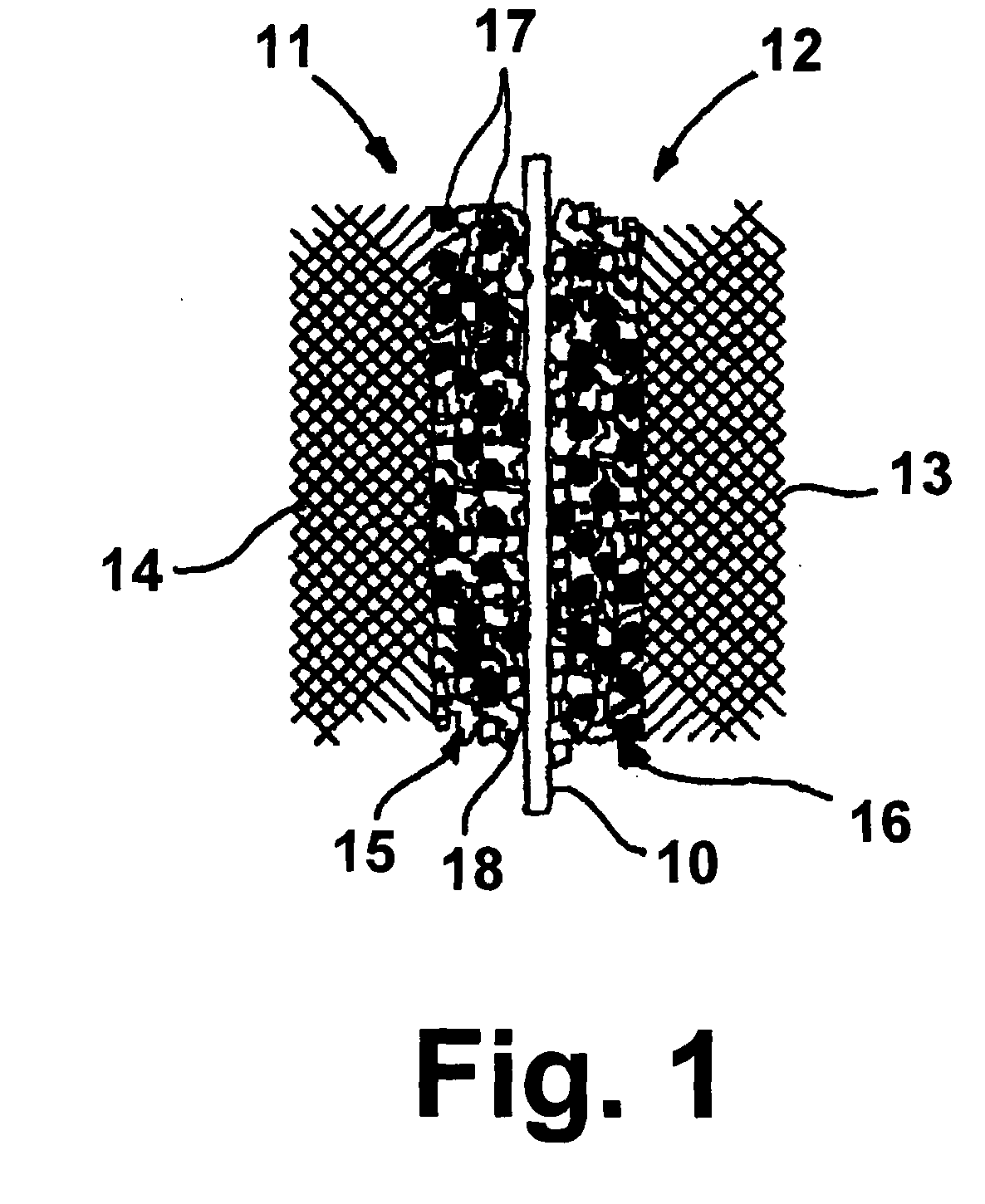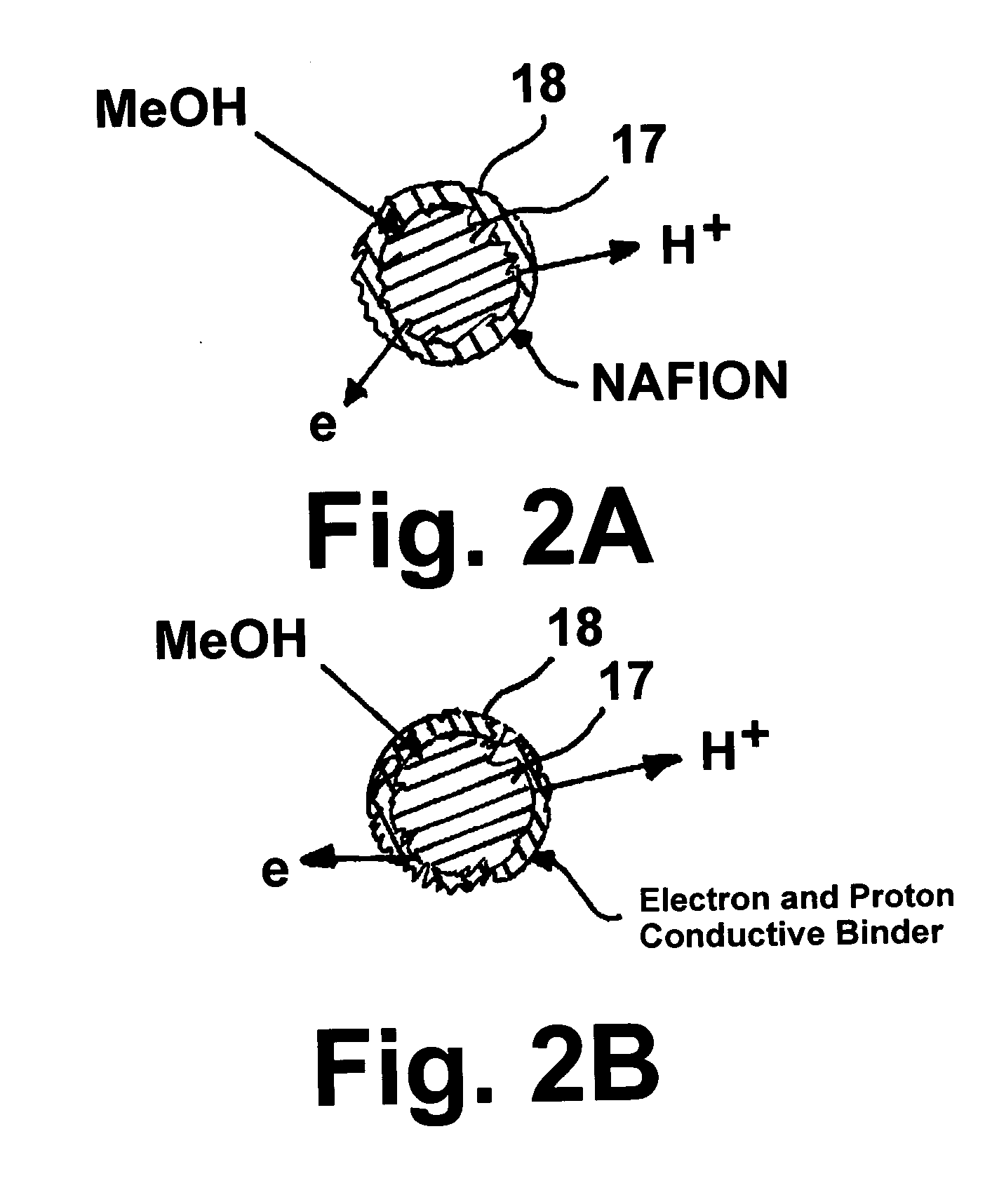Direct methanol fuel cell electrode catalyst
- Summary
- Abstract
- Description
- Claims
- Application Information
AI Technical Summary
Benefits of technology
Problems solved by technology
Method used
Image
Examples
example
[0028] Anode catalyst, PtRu (1:1), was purchased from Johnson Matthey. The catalyst was mixed with an amount of water and isopropanol (1:1) sufficient to wet the catalyst. Then a 20% by weight portion of a 5% NAFION emulsion (DuPont) was mixed with the wetted catalyst. Thereafter, a 10% by weight portion of polyaniline (emeraldine salt), long chain grafted to lignin (Sigma-Aldrich), was mixed with the anode catalyst, resulting in formation of a catalyst ink. After stirring for two hours, the ink was ready to apply to the electrolyte membrane or gas diffusion electrodes. As shown in FIG. 3, the performance of a direct methanol fuel cell employing in the range of about 5 wt. % to about 20 wt. % polyaniline catalyst ink is improved over a conventional cell operating without the benefit of this invention. Also as shown, the best performance is obtained using about 10 wt. % polyaniline ink.
[0029] Also disclosed herein is a method for reducing or substantially eliminating methanol crossov...
PUM
 Login to View More
Login to View More Abstract
Description
Claims
Application Information
 Login to View More
Login to View More - R&D
- Intellectual Property
- Life Sciences
- Materials
- Tech Scout
- Unparalleled Data Quality
- Higher Quality Content
- 60% Fewer Hallucinations
Browse by: Latest US Patents, China's latest patents, Technical Efficacy Thesaurus, Application Domain, Technology Topic, Popular Technical Reports.
© 2025 PatSnap. All rights reserved.Legal|Privacy policy|Modern Slavery Act Transparency Statement|Sitemap|About US| Contact US: help@patsnap.com



